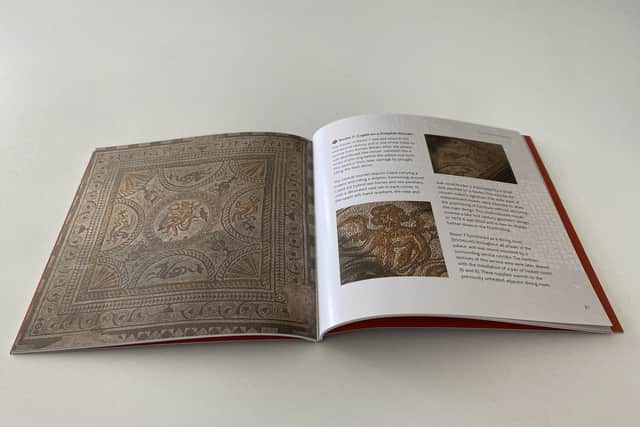New guide book to bring Fishbourne Roman Palace to life
and live on Freeview channel 276
Written by Bournemouth University academic Dr Miles Russell, the book is the product of a lifetime’s fascination.
“I first visited Fishbourne on a school trip aged seven in 1974 and I still possess the school homework project I wrote immediately after,” Dr Russell said. “Half a century later, and I still can’t believe that I’ve been asked to write the new version of the official guide. It’s a dream come true!”
Advertisement
Hide AdAdvertisement
Hide AdThe Roman Palace is one of the largest excavated Roman homes in Britain/ The ruins were partially discovered in 1805 and later excavated by the Sussex Archaeological Society, which now looks after the palace. Dr Russell, the director of fieldwork in the Department of Archaeology and Anthropology at Bournemouth University, hopes the guide will help new visitors find their way through the vast ruins and site regulars return with fresh insight.


“Fishbourne is a unique site, being the earliest and largest Roman civilian residence in Britain with a footprint greater than Buckingham Palace,” he said.
The site also boasts some of the earliest mosaics anywhere in Great Britain, as well as some of the most luxurious examples of Imperial-style fresco painting anywhere in Europe. Alongside all of that, it is home to one of only five life-sized statues of a 14-year-old Emperor Nero, found during excavations in the 1960s.
Proceeds from sales of the guidebook will go to the The Sussex Archaeological Society, which promotes, protects and provides access to the history and heritage of West Sussex. Dr Russell said: “The charity relies on donations from members of the public, so we wanted to find a way of helping it to get back on its feet after low visitor numbers to its sites during the lockdown in 2020."
Advertisement
Hide AdAdvertisement
Hide AdThe release of the guidebook comes not long after another major Roman Discovery elsewhere in West Sussex: a 14 hectare archaeological site in Tangmere on land originally earmarked for 1,300 homes and community facilities. Work on the site commenced earlier this month, and is expected to continue until late 2026 as experts continue to learn more about Tangmere’s Roman past.